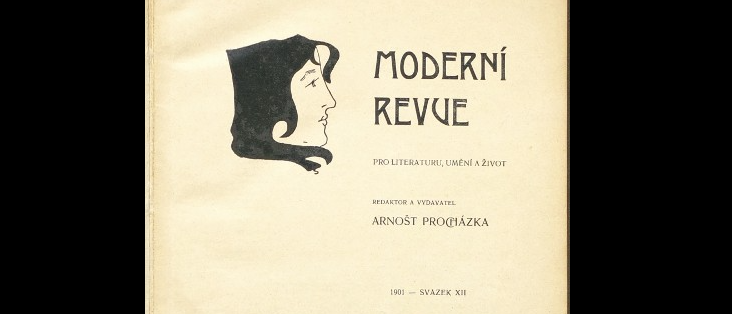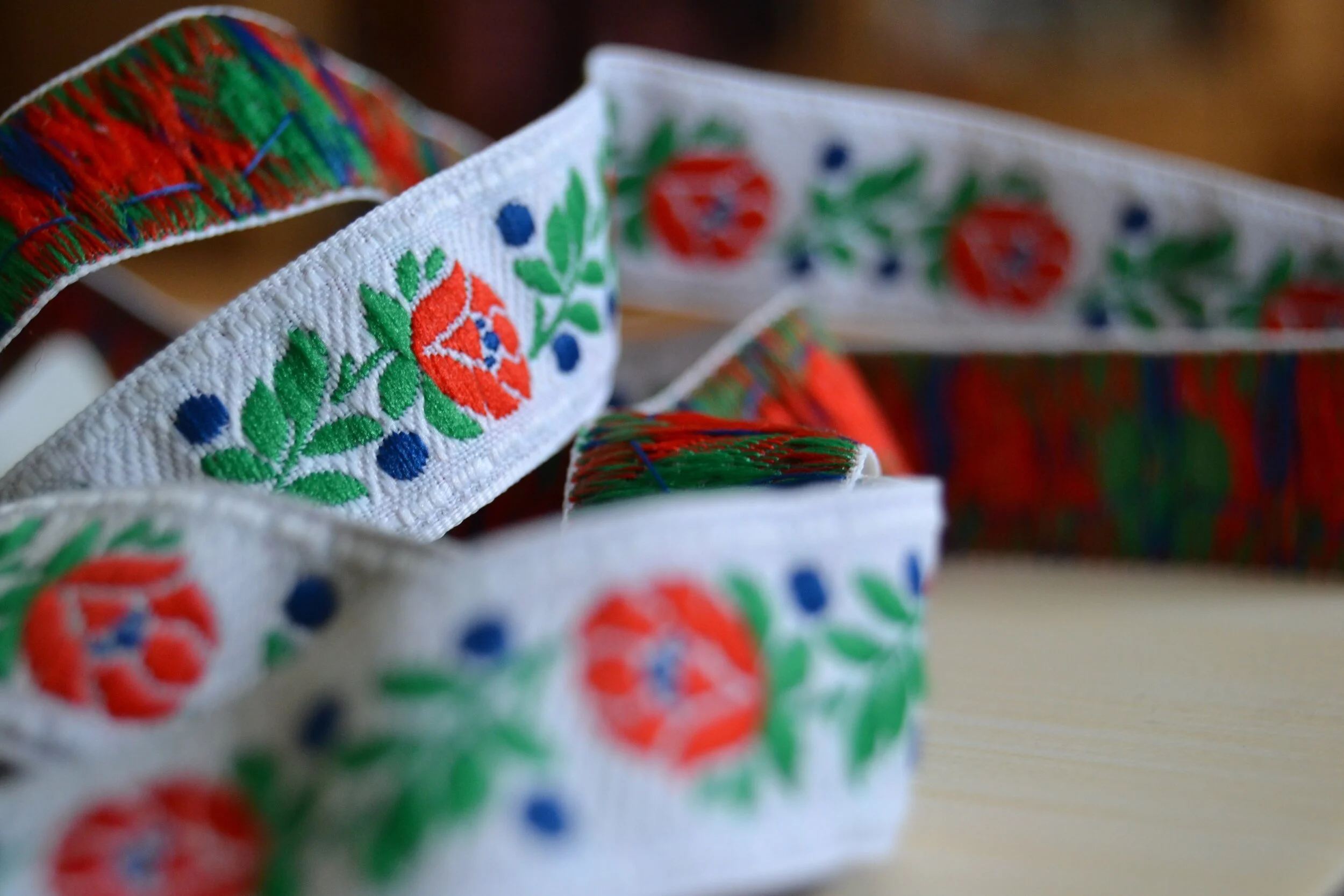The history of Czech poetry goes as far back as the 9th century. It begins with the works of Saints Cyril and Methodius, who translated texts in the bible from Greek to Old Church Slavic, a language in which the first Czech poems were written. Since then, Czech poetry continued to flourish, even when the chosen languages of the Czechs continued to face challenges throughout the centuries. The apparent culmination of Czech poetic culture is of a poem, Máj, written by Karel Hynek Mácha.
Alfons Mucha: Father of Art Nouveau and Proud Czech
Alfons Mucha was an illustrator and the originator of the Art Nouveau movement. After being expelled from school for doing poorly, he decided to become a professional artist but still had trouble getting accepted by the Acadamy of Fine Arts in Prague, meaning he had to begin with a modest career. With the aid of a wealthy benefactor, Mucha worked as an illustrator in Paris, where he found his first lucky break when being commissioned to work on the commercial advertisement of Sarah Bernhardt’s Gismonda. This was the moment when his career prospects and celebrity skyrocketed.
July 5: Day of Saints Cyril and Methodius
Saints Cyril and Methodius have shaped the history of Christianity and even language in Eastern Europe. By translating the Holy Bible into the Slavic languages, they were able to convert many Slavs to Christianity. Their efforts have resulted in the existence of the Cyrillic Alphabet through the development of the Glagolitic Alphabet, for example. July 5 is the day when the Saints’ far-reaching efforts are recognized.
The Origin of the Bohemian Name
Before the Czechs were Czech, they were Bohemian, beginning with Roman-named Celtic “Boii” people. The Germans called the land “Böhmen” while the Romans called it “Boiohaemum,” meaning the history of the Boii continued to influence the land long past their existence there, even by the time the Czechs began living there. Translated to English, these names became “Bohemia,” where “Bohemians” lived, before they were finally known as Czechoslovakians, then as Czechs and Slovakians in their respective nations.
Tomáš Masaryk and the United States
Tomáš Masaryk, first president of Czechoslovakia, was inspired by the freedom and democracy of the United States. While negotiating for Czechoslovakia’s independence, Masaryk developed not only political relationships, but also personal and intellectual ones with the United States. During the First World War, he was exiled after siding with the Allied Powers, but did not give up on garnering support from his fellow Czechoslovakians. The Lansing Declaration of May 1918 was one of many important moments in the future creation of the Czechoslovak Republic, which eventually came to pass, all before he died in 1937.
A History of Czech Feminism
The once egalitarian, agrarian society of Bohemia became ruled by the Hapsburg Dynasty, causing a regression in women’s rights until Christianity helped improve their lives. The National Revival brought the creation of Czechoslovakia and greater rights for women. When communism came, rights improved in some ways and did not in others. The change to a capitalistic democracy brought further changes.
Czech National Revival
A response to increased Germanization, the Czech National Revival revived Czech literature, language, history, and politics. Increased nationalism marked this period of cultural revival. The movement started before the 19th century with Czech intellectuals such as Josef Jungman and Josef Dobrovský becoming more discontent with the decrease in Czech culture, language, and national identity. Czech national identity also involved realism, rejecting the romanticism of the past, which was considered “anti-nationalist.” With the end of the Great War, the goals of the National Revival movement were successfully met.
Slovak Flag
White, red, and blue make up the Pan-Slavic Tricolor, chosen based on the flag of Russia since that nation, during the late 17th century, represented Slavic independence and power. In fact, their flag was initially too similar to the Russian flag for them to keep it that way, thus the decision to ultimately add the heraldic symbol was made on September 1, 1992.
Jiří Karásek: Czech Decadence Writer (1871-1951)
Jiří Karásek ze Lvovic was a unique individual, whose name is even somewhat unique. He was fascinated with death as a child and the occult as an adult. He wrote poetry and critique, collected art and co-founded a magazine, the Moderni Revue. When homosexuality was illegal in Czechoslovakia, he was openly gay and was an activist in the LGBT community of the time.
An Army with No Country: The Czechoslovak Legion in Europe
They were men without their own country, living split up among not one, but two mighty empires. When the Great War broke out and those empires began to crumble, those men took up arms in the struggle and fought so that one day they too would have their own nation. These were the men of the Czechoslovak Legion.
The Church of St. Cyril and Methodius: A History Old and New
Czech Spring Rituals and Celebrations of Love
In Slavic cultures, spring has always been the most important time of the year - it’s the time of rebirth, associated with life, fertility, and love. Ancient Slavs celebrated the end of winter and the coming of spring with a number of festivals and rituals. Among Czechs, one such tradition has survived to this day - popularly known as Czech Valentine’s Day.
The Kroj - A Connection to Czech Heritage
Koláče, Klobásníky, and Czech Cuisine
If you’re from Texas, you’re guaranteed to have tried kolache - a savory sausage wrapped in a roll of sweet dough. However, that name is misleading. A kolač (pronounced kolach) is actually a sweet pastry made of puffy dough with a fruit filling. Originally brought to the United States by Moravian immigrants, it’s now a widespread dessert and snack. The savory snack mistakenly referred to as kolache, is actually called klobasniky, and it has an interesting Texan origin.
Koleda - Slavic Winter Solstice Festival
Koleda, or Koliada, is an ancient pre-Christian Slavic festival, marking the winter solstice. Ancient Slavs believed that during the dark and cold winter, the border between the spiritual and the mortal worlds is the thinnest. The purpose of Koleda was to bring new light to this dark period and prepare for the next year by blessing local households and keeping malevolent spirits away. For this reason, candles and bonfires were lit in preparation for Koleda to help the winter turn to spring and symbolize the return of the Sun. This gave the ancient Slavs hope and lifted their spirits during the depressing winter.















